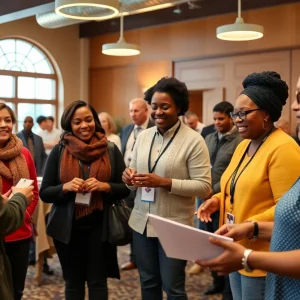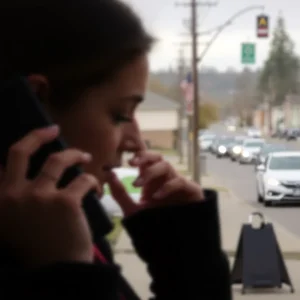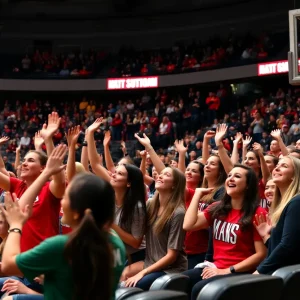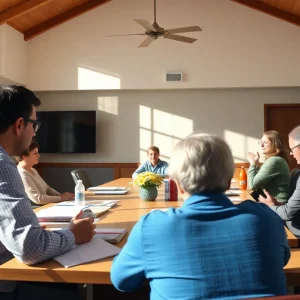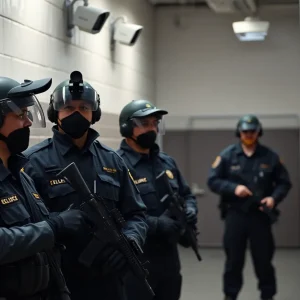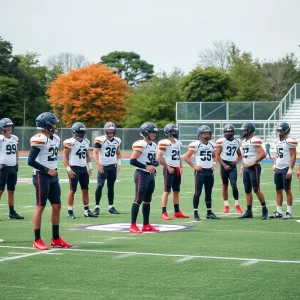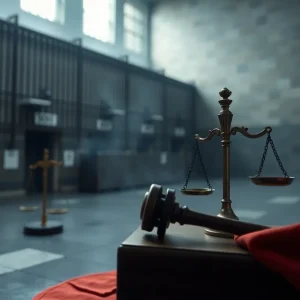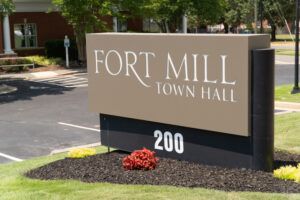New York City Witnesses Controversy Over Vice President Harris’ “SNL” Appearance
New York City has found itself at the center of a political debate following Vice President Kamala Harris’ recent appearance on “Saturday Night Live”. The episode aired on November 2 and featured a surprise guest appearance by Maya Rudolph, who portrayed Harris in a comedic sketch. However, the optics of this segment have sparked a significant response from the Federal Communications Commission (FCC).
FCC Takes Notice
On Sunday night, the FCC filed an Equal Time notice in response to Harris’ appearance. According to FCC commissioner Brendan Carr, the decision was made partly due to concerns that the appearance showcased a “clear and blatant effort to evade” the rules designed to prevent biased and partisan conduct during election cycles. This particular rule aims to ensure that equal opportunities are provided to opposing candidates, especially during election periods.
What Does Equal Opportunity Mean?
The FCC program guidelines state that during elections, media outlets must offer “comparable time and placement” to opposing candidates. This means if one candidate appears on a show, other candidates running for the same position must also be afforded similar opportunities for exposure. This guideline is put into place to maintain fairness and prevent any one party from dominating the airwaves.
Context of the Situation
Earlier in the broadcast, NBC aired a video message from former President Donald Trump, who is running against Harris for the 2024 presidency, during a NASCAR race broadcast. This raised additional concerns about the fairness of airtime, given that Harris was featured in a humorous context on a show that’s known for its parody and political commentary.
Timing and Impact
Harris’ segment lasted about one minute and 30 seconds, and was characterized by lighthearted banter and comedic sketches. The Vice President’s appearance came right after her on-screen look-alike, Maya Rudolph, established a humorous connection with the audience. However, the timing and nature of her appearance have left some questioning the implications it might have on the upcoming elections.
The Ripple Effect
In addition to Harris, the FCC’s attention also turned to Tim Kaine, who was Hillary Clinton’s running mate in the 2016 election. Kaine made a surprise appearance on “SNL” shortly after Harris, prompting further Equal Time notices for his presence as well. Having Kaine on the show alongside Harris increases the raising concerns about media bias and equal representation.
Reactions and Ongoing Discussions
Following the FCC’s announcements, discussions about media regulations and their role in elections have reignited. Some critics argue that the rules are outdated in today’s rapidly evolving media environment, while others emphasize the importance of maintaining a fair playing field for all candidates.
The controversy surrounding Harris’ appearance reflects broader questions about the intersection of entertainment and politics, especially during election seasons. As campaigns ramp up for the 2024 elections, the fallout from this incident may provide a preview of how candidates will navigate the media landscape in the upcoming months.
Conclusion
As the political scene becomes increasingly competitive and complex, the FCC’s response to Vice President Harris’ “SNL” appearance serves as a reminder of the careful balance media must strike. In the world of politics and entertainment, the lines can often blur, leading to intriguing discussions about fairness, representation, and the future of electoral campaigning.





